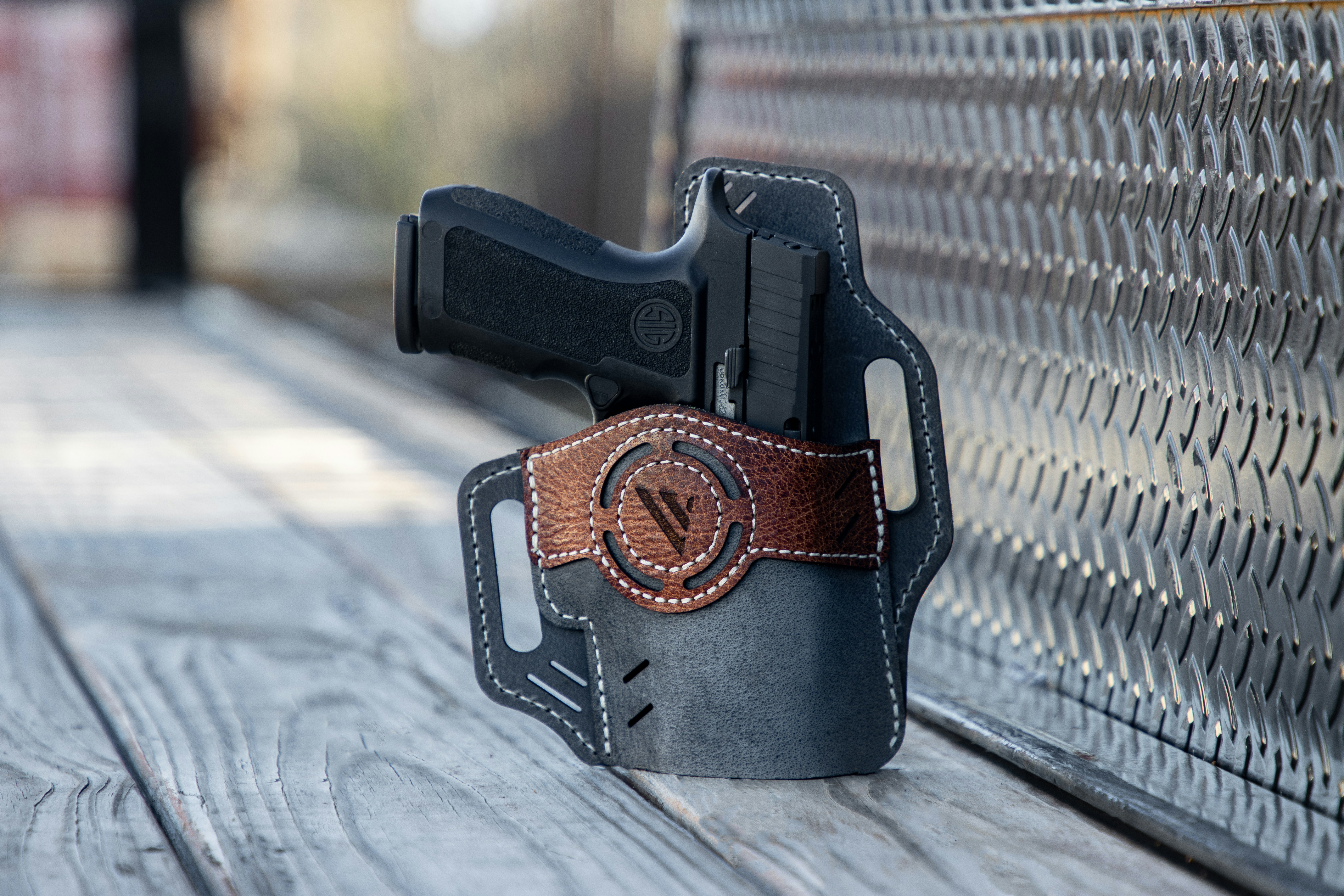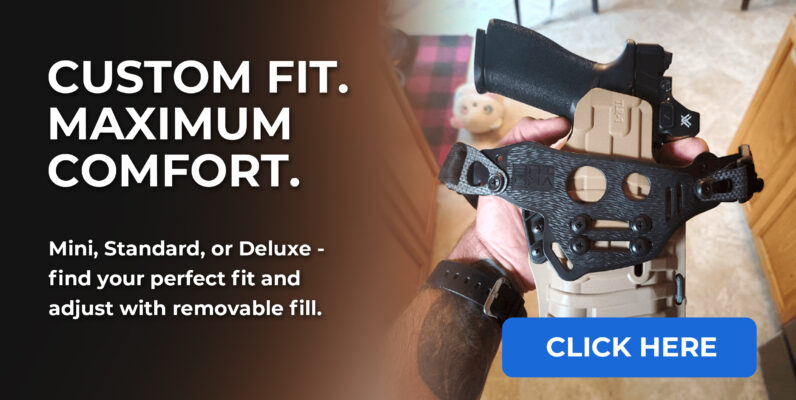Carry Techniques and Optimization, CCW Courses and Tips, Firearms Training
Practical CCW Training Tips for Everyday Carriers
For responsible everyday carriers, developing a thoughtful and consistent approach to CCW training is essential. Whether you’re new to concealed carry or have years of experience, refining your skills through intentional practice builds confidence, improves performance, and prepares you for unexpected defensive encounters. But great CCW training goes far beyond shooting at the range—it involves dry fire repetition, equipment optimization, mindset development, and structured training routines. This guide breaks down practical training tips that help enhance safety, efficiency, and comfort, all while ensuring your setup—including holster and concealment tools—is optimized for daily carry.
As you advance in your CCW training, one overlooked but crucial element is overall carry comfort. A firearm you can carry comfortably every day with consistency is far safer—and far more effective—than one left at home because of discomfort. This is where gear like the Cloudster Pillow holster wedge becomes an indispensable tool. With innovations that dramatically improve concealment and comfort, your training and carry experience become easier to maintain long-term.
The Importance of Dry Fire Practice
Dry fire practice is one of the most valuable—and most accessible—components of CCW training. Without the need for live ammunition, shooters can strengthen foundational skills in a controlled environment, making it an excellent method for reinforcing mechanics and improving consistency. Many top instructors across the nation emphasize dry fire as a cornerstone of concealed carry proficiency.
One of the main benefits of dry fire work is the improvement of trigger control. Practicing a steady, uninterrupted trigger press without recoil allows you to build the consistency required for accurate shot placement. Resources on dry fire drills provide additional techniques for shooters looking to refine these fundamentals.
Beyond trigger mechanics, dry fire enhances sight alignment and sight picture. This is a crucial part of any CCW training regimen, as proper alignment directly impacts accuracy—especially under stress. Practicing visual discipline during dry fire helps engrain the ability to track sights during the draw stroke and follow-through, which translates seamlessly into real-world defensive situations.
Safe dry fire practice is non-negotiable. Always verify your firearm is unloaded and keep live ammunition in a separate room. Using dummy rounds or laser cartridges can also elevate the quality of your practice. Pairing dry fire with essential tools like a comfort-enhancing holster wedge ensures that every repetition mimics your real carry setup, improving both skill and comfort.
For further study on trigger mechanics, consider reviewing detailed breakdowns on improving trigger control, which help reinforce the technical side of consistent shooting.
Choosing the Right Holster for Comfort and Accessibility
Holster selection plays a pivotal role in both comfort and performance. A well-chosen holster enhances concealment, speeds up the draw process, and enhances the daily carry experience. In contrast, a poorly designed holster can hinder your CCW training progress, reduce consistency, and even compromise safety.
When choosing between IWB (inside-the-waistband) and OWB (outside-the-waistband) holsters, consider your lifestyle, body type, and typical clothing. Each holster style offers unique advantages. IWB holsters excel in concealment but require additional comfort tools—such as the Cloudster Pillow holster wedge—for extended wear. OWB holsters are comfortable and easy to draw from but generally require more careful concealment strategies.
Material selection is equally important. Leather holsters mold to the body over time, kydex provides rigidity and quick access, and hybrid holsters offer a blend of comfort and structure. Always test a holster with your everyday clothing to assess printing, accessibility, and comfort throughout movement.
For additional insights on holster positioning and concealment, reputable training organizations such as Shooting Illustrated offer excellent guidance that can help refine your equipment selection.
When you combine the right holster with a correctly positioned holster wedge like the Cloudster Pillow, your CCW training becomes far more productive. Daily carry becomes more natural, drawing becomes smoother, and overall comfort dramatically increases.
Mental Preparedness: Developing the Right Mindset for Carrying
No matter how refined your shooting mechanics are, no concealed carry strategy is complete without mental preparedness. The mental component is often underestimated but may be the single most important part of CCW training. A strong tactical mindset shapes how you perceive your environment, make decisions, and react under stress.
Situational awareness is the core of mental readiness. Understanding how to observe, assess, and anticipate threats can often prevent a confrontation before it begins. Many defensive experts use the Cooper Color Code as a framework for gauging alertness levels in everyday environments.
Visualization is another critical psychological tool for concealed carriers. Mentally rehearsing potential scenarios helps reduce the freeze response in high-stress situations and allows you to make decisions based on practiced responses rather than panic.
Ongoing education, scenario-based drills, and exposure to training environments all contribute to the development of a resilient defensive mindset. When your CCW training includes this level of psychological preparation, you become a more responsible, capable, and confident everyday carrier.
Creating a Comprehensive Training Routine
A well-structured training routine is the key to ongoing improvement. Effective CCW training goes beyond periodic live-fire range sessions—it includes a balanced combination of dry fire practice, holster drills, defensive mindset training, and consistent gear adjustments.
Dry fire should be incorporated several times per week. Live fire should be conducted at least monthly to validate your progress and ensure that your skills hold up under recoil and time pressure. Holster drills—especially with your actual carry gear—build draw speed, retention awareness, and safe reholstering habits.
Mental training should be continuous. This includes reading defensive case studies, studying situational awareness resources, and rehearsing threat assessments. Supportive internal resources such as Cloudster Pillow’s concealed carry comfort blog help expand your knowledge of everyday carry optimization.
Gear refinement is the final component of a complete training cycle. Regularly evaluate your holster, belt, and concealment tools. If your setup causes discomfort, printing, or shifting, your training effectiveness will suffer. Tools like the Cloudster Pillow holster wedge can dramatically improve daily consistency, especially when you’re refining draw practice, movement drills, and concealment strategies.
Remember: the best CCW training programs are adaptable. Your skills, physical needs, and gear preferences will evolve over time. By tracking your training with a journal and periodically reassessing your equipment, you create a dynamic system for ongoing improvement.



